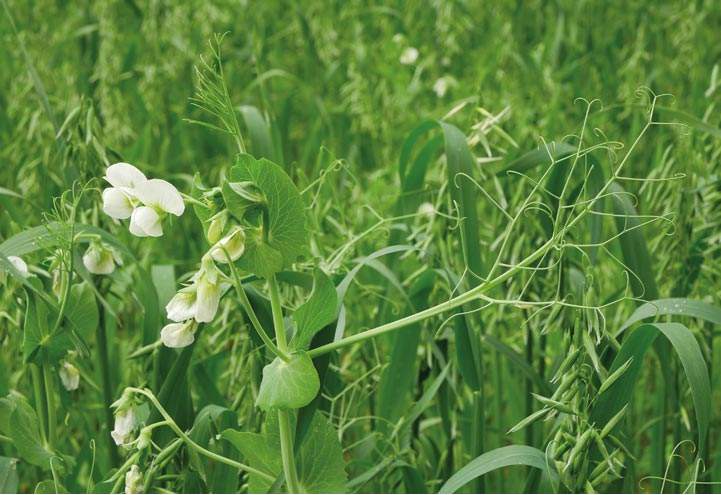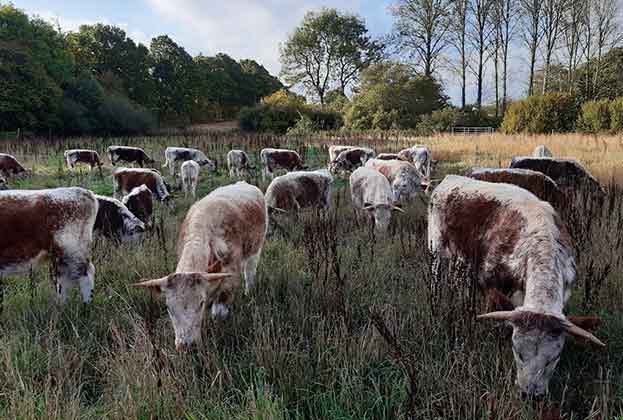Where do we learn, how do we learn, what does good advice look like?
Regenerative techniques: a glossary
Regenerative, agro-ecology, permaculture, holistic land management, the semantics of land management are ever-changing. Below is a guide to the techniques a regenerative agricultural system might look to adopt:
A desire to improve soil health is a common trigger that leads to the adoption of regenerative agricultural practises on a farm. Soil type also determines the suitability of cover crop mixes and key machinery such as no-till drills, meaning that while a successful regenerative agriculture system has common principles, the best approach for a farm is scenario-specific.
Visiting demonstration sites, tapping into the experience of others via YouTube videos and Twitter and connecting with mentors are often important ingredients for success. The Agriculture and Horticulture Development Board has increased its focus on knowledge exchange, with many of its Monitor Farm demonstration sites exploring soil health issues, providing a forum for farmers to discuss the practicalities of integrating cover and catch crops and benefit from collective experience.
Events dedicated to regenerative agriculture, such as the Groundswell show and conference, have developed and play an important role in both demonstrating the technology and connecting farmers with each other and with advisors.
The advice farmers and land managers require to adopt a regenerative system, while minimising their financial risk, is much broader than traditional agronomy and includes soil health, cultivation systems and the integration of livestock, in addition to pesticides and crop nutrition. Consequently, advice cannot be siloed into traditional roles such as agronomist and business consultant.
Collaboration is essential and should involve a team with a broader range of skills and strong communication to ensure that it delivers for the farmer
Andrew Teanby, Associate Director, Rural Research
Collaboration is essential and should involve a team with a broader range of skills and strong communication to ensure that it delivers for the farmer. Advisory services have evolved in response, with agronomy firms developing soil health reporting services, while expanded input advisory services and product offerings now include catch and cover crop mixes, biostimulant seed treatments and foliar sprays.
Business consultants play a key role in steering the business strategy, managing the transition of expectations with lenders and investors and integrating livestock and arable enterprises within a profitable system.
It is now more important than ever that advice looks beyond gross margins and considers the impact of the system on fixed costs and resource requirements within the context of a longer-term vision.
Soil quality in the tenanted sector – filling in the gaps?
It is in a landowner’s interest to incentivise improvements in soil organic matter
Improving soil quality by rebuilding soil organic matter (SOM) levels directly benefits farmers, improving soils nutrient holding capacity, infiltration rate and working windows. However, as a natural process, positive management actions are not immediately followed by results. This lag could be particularly significant for decision-making on the 30% of the UK’s agricultural land that is tenanted. If a tenant adopts regenerative agricultural practices, does tenancy law allow them to be rewarded for improving the quality of the land?
Tenants of Agricultural Holdings Act (AHA) and Farm Business Tenancies (FBT) can claim compensation for improvements from their landlords at the end of their tenancy term. The process for AHA end of tenancy compensation claims traditionally focused on the residual chemical nutrient value of bought-in inputs, but was widened in 2015 to incentivise tenants to farm sustainably. This allowed tenants to claim for improvements from the use of digestate and compost. However, the benefits from cover and catch crops still appear to fall outside the compensation provisions, suggesting it remains focused on nutrients, not SOM. AHA tenancies don’t have a baseline against which to assess soil quality improvements and compensation is based on the value to the incoming tenant; there is no straightforward way to value the productivity benefits of soil organic matter.

The benefits from cover and catch crops still appear to fall outside the compensation provisions
When new tenancies are being created, the Agricultural Tenancies Act 1995 offers more flexibility for soil quality objectives and a management regime to be built within an FBT agreement. This could include comprehensive soil quality test results undertaken at tenancy commencement, a monitoring regime and reassessment protocol for the end of the agreement. The default position is that for routine improvements made in the normal course of farming the holding, the tenant is entitled to compensation equal to the improvement in the value of the holding. This is a more generous position than under the AHA as it includes enhanced capital value, although the Act does allow a compensation limit to be set.
Logically, improving soil quality should also increase the value of land. However, within a given land grade or soil type, the farmland market does not currently exhibit meaningful price differentiation based on other soil quality criteria. This is because scarcity is a major driver in the market and outweighs factors such as SOM levels, which can be remedied in time.
Due to agricultural subsidy reform, we forecast that more farmland will be marketed for sale in the UK. If supply exceeds demand this could lead to greater differentiation in value based on properties such as SOM levels. Taking a long-term view, it is therefore in a landowner’s interest to encourage the regeneration of the land they own. For existing tenancies, assessing soil quality and incentivising improvements via a private scheme could be one way for landlords to align the interests of both parties under clear objectives where the tenancy agreement does not.
Read the articles within Spotlight: Regenerative agriculture below.
.jpg)

